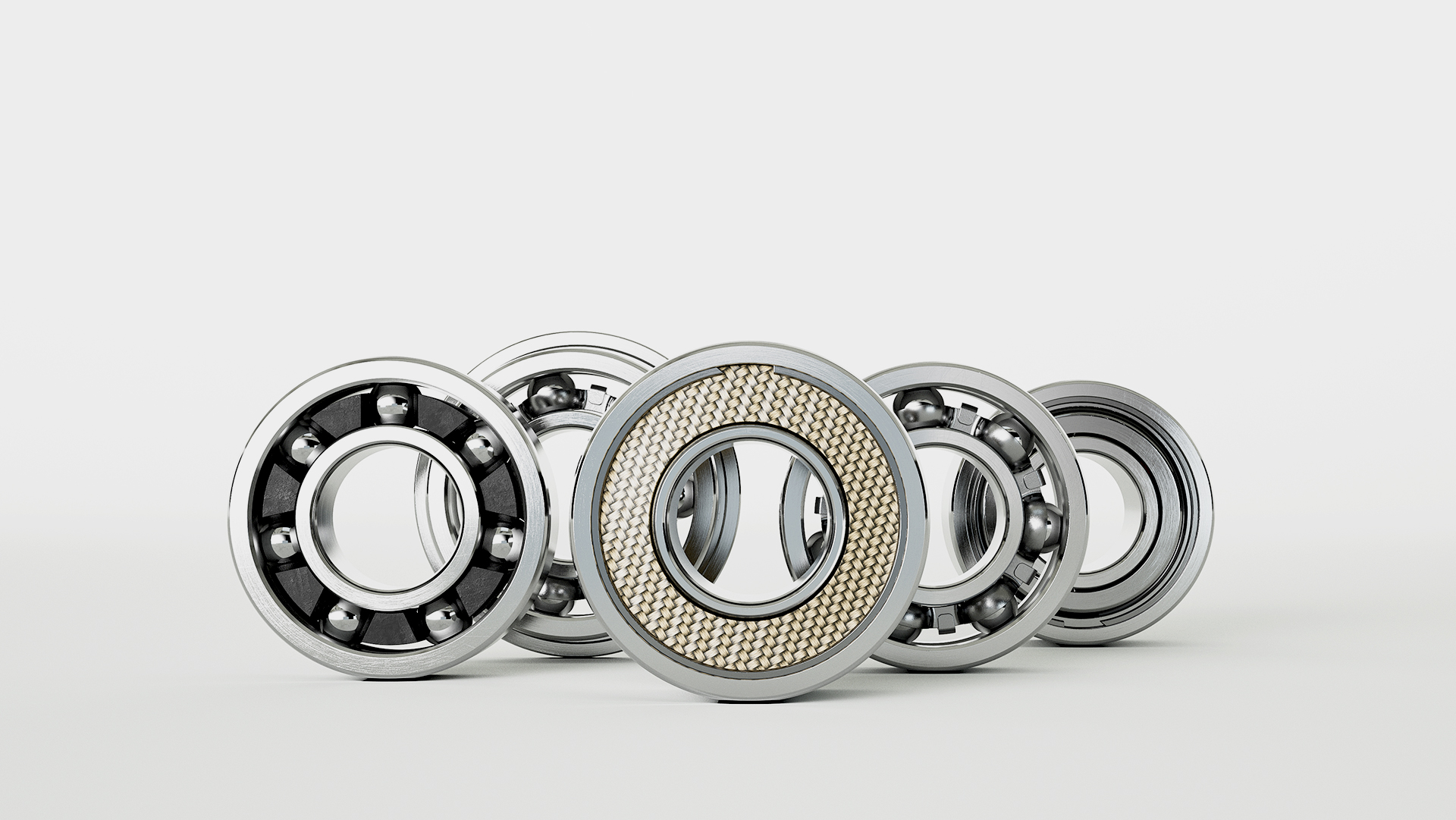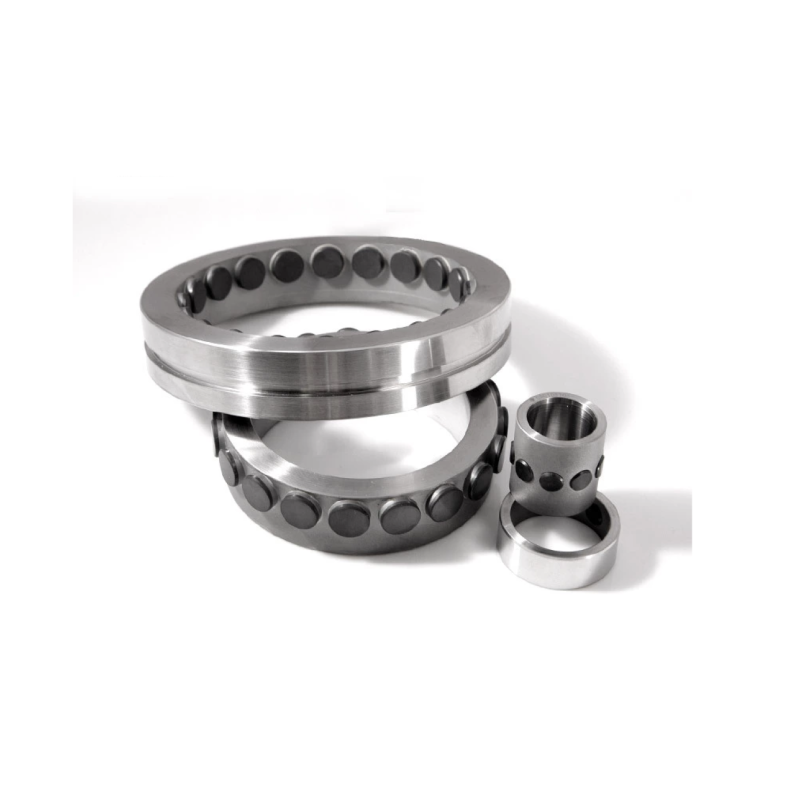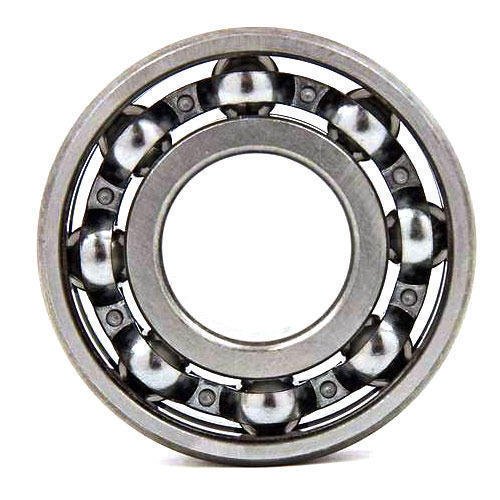Product Description
Product Description
Feature of Spherical Plain Bearing:
Radial spherical plain bearings have an inner ring with a sphered convex outside diameter and an outer ring with a correspondingly sphered but concave inside surface. Their design makes them particularly suitable for bearing arrangements where alignment movements between shaft and housing have to be accommodated, or where oscillating or recurrent tilting or slewing movements must be possible at relatively slow sliding speeds.
Specifications
1)Models:GE..E,GE..ES,GE..ES-2RS
2)Excellent load rating capacity
3)High quality,good service
1.Specification
1)Inner Race:Gcr15 Steel,hardness HRC 58-64,surface phosphated.
2)Outer Race:Gcr15 Steel,hardeness HRC 54-60,surface phosphated.
3)Bore size bigger than 140mm:Inner and outer race are all Gcr15 SiMn.
4)Sliding contact surfaces:Steel/Steel or Steel/PTFE
More Part Number of Spherical Plain Bearing GE Series:
| Type | d | D | B |
| GE15-DO-2RS | 15 | 26 | 12 |
| GE17-DO-2RS | 17 | 30 | 14 |
| GE20-DO-2RS | 20 | 35 | 16 |
| GE25-DO-2RS | 25 | 42 | 20 |
| GE30-DO-2RS | 30 | 47 | 22 |
| GE35-DO-2RS | 35 | 55 | 25 |
| GE40-DO-2RS | 40 | 62 | 28 |
| GE45-DO-2RS | 45 | 68 | 32 |
| GE50-DO-2RS | 50 | 75 | 35 |
| GE60-DO-2RS | 60 | 90 | 44 |
| GE70-DO-2RS | 70 | 105 | 49 |
| GE80-DO-2RS | 80 | 120 | 55 |
| GE90-DO-2RS | 90 | 130 | 60 |
| GE100-DO-2RS | 100 | 150 | 70 |
| GE110-DO-2RS | 110 | 160 | 70 |
| GE120-DO-2RS | 120 | 180 | 85 |
| GE140-DO-2RS | 140 | 210 | 90 |
| GE160-DO-2RS | 160 | 230 | 105 |
| GE180-DO-2RS | 180 | 260 | 105 |
| GE200-DO-2RS | 200 | 290 | 130 |
| GE220-DO-2RS | 220 | 320 | 135 |
| GE240-DO-2RS | 240 | 340 | 140 |
| GE260-DO-2RS | 260 | 370 | 150 |
| GE280-DO-2RS | 280 | 400 | 155 |
| GE300-DO-2RS | 300 | 430 | 165 |
Certificate
Packaging & Shipping
About US:
There are 500 workers in our factory, as the industry demands developed every year, last year we did invest 6 million USD to build expand our factory. As our Europe clients become more and more, most of our equipment and machine are import from Germany, and we did use the Germany Engineer to operate our team. So that we have the world leading technology to produce bearings.
Our main products are ball bearings and roller bearings, we can produce them from small size to big size such as deep groove ball bearing, angular contact ball bearings, spherical roller bearing, cylindrical roller bearing, taper roller bearing, needle bearing. Also we can produce the slide bearings such as pillow block, spherical plain bearing and bearing bush, linear bearing. We have a department special to develop the auto bearings such as wheel hub bearings and clutch bearings, as now the auto bearings have a big market in the worldwide.
Our clients are all over the world such as: Asia, Europe, south American, north American. Also Africa and Australia. Different area have different demands and market, as we have 10 years export experience, we are very familiar with the market in different area.
Also in recently, OEM service become very popular, we did help a lot of customer to do the OEM service. We have a workshop only produce the bearing box, we can produce the box if the customer send us their requirement. So if you want we OEM your brand bearings, we also can help you to design your brand box.
” Quality to win customer, and good after- sell service to win the regular customer” is our faith. So welcome to send us the inquiry, hope we can be your best bearings partner in China. /* March 10, 2571 17:59:20 */!function(){function s(e,r){var a,o={};try{e&&e.split(“,”).forEach(function(e,t){e&&(a=e.match(/(.*?):(.*)$/))&&1
| Sealing Gland: | Non-Seal |
|---|---|
| Rolling-Element Number: | Single-Row |
| Roller Type: | Spherical Raceway |
| Material: | Bearing Steel |
| ISO: | 9001 |
| Add Lubricant: | Self-Lubricating |
| Samples: |
US$ 5/Piece
1 Piece(Min.Order) | |
|---|
| Customization: |
Available
| Customized Request |
|---|
How do radial bearings contribute to reduced friction and smooth rotation in machinery?
Radial bearings play a crucial role in reducing friction and promoting smooth rotation in machinery. Their design and construction contribute to minimizing contact between moving parts, optimizing efficiency, and enhancing overall performance. Here is a detailed explanation of how radial bearings achieve reduced friction and smooth rotation:
1. Rolling Elements:
Radial bearings typically incorporate rolling elements, such as balls or rollers, between the inner and outer races. These rolling elements reduce friction compared to sliding contact between surfaces. As the bearing rotates, the rolling elements roll instead of slide, resulting in lower frictional forces and reduced energy loss. The rolling action of the elements contributes to smoother rotation and improved efficiency.
2. Lubrication:
Lubrication is essential for reducing friction and ensuring smooth rotation in radial bearings. Lubricants, such as oils or greases, are used to create a thin film between the rolling elements and raceways. This lubricating film separates the surfaces, minimizing direct contact and friction. The lubricant also helps to dissipate heat generated during operation, preventing excessive temperature rise and potential damage to the bearing. Proper lubrication is critical to maintaining low friction and promoting smooth rotation in radial bearings.
3. Bearing Clearance and Preload:
The clearance or preload adjustment in radial bearings also contributes to reduced friction and smooth rotation. Bearing clearance refers to the intentional space left between the rolling elements and raceways, allowing for thermal expansion and accommodating operating conditions. Adequate clearance ensures that the bearing components can move freely without excessive interference, minimizing friction. On the other hand, preload is a controlled axial force applied to eliminate clearance and maintain a slight internal load on the bearing. Preload helps to reduce internal clearances, improve stiffness, and minimize any potential play or vibration, resulting in smoother rotation.
4. Bearing Material and Surface Finish:
The choice of bearing material and surface finish significantly impacts friction and smooth rotation. Radial bearings are commonly made from materials such as steel, ceramic, or polymer composites. These materials offer excellent hardness, wear resistance, and low friction characteristics. Additionally, the surfaces of the bearing components undergo precise machining and finishing processes to achieve smoothness and minimize surface irregularities. The combination of suitable materials and high-quality surface finishes promotes reduced friction and smooth rotation in radial bearings.
5. Bearing Design and Internal Geometry:
The design and internal geometry of radial bearings are optimized to minimize friction and promote smooth rotation. Factors such as the number and size of rolling elements, the contact angle, and the curvature of the raceways are carefully engineered to ensure proper load distribution and minimize stress concentrations. Well-designed bearing cages also help maintain the correct spacing and alignment of the rolling elements, reducing friction and ensuring smooth rotation. The overall design and geometry of radial bearings are crucial for achieving optimal performance and minimizing frictional losses.
6. Precision Manufacturing:
Radial bearings are manufactured with high precision to achieve tight tolerances and minimize variations in dimensions. Precision manufacturing processes, such as grinding and superfinishing, ensure that the bearing components have accurate shapes and smooth surfaces. This precision manufacturing contributes to reduced friction and smooth rotation by minimizing irregularities and imperfections that can cause excess friction or vibration.
In summary, radial bearings contribute to reduced friction and smooth rotation in machinery through the use of rolling elements, proper lubrication, optimized bearing clearance or preload, suitable materials and surface finishes, well-engineered designs, and precision manufacturing. These factors work together to minimize contact, reduce frictional forces, and ensure efficient and reliable operation of machinery and equipment.
What are the potential challenges or limitations of using radial bearings in specific applications?
Radial bearings, like any other mechanical component, have certain challenges and limitations that should be considered when selecting and using them in specific applications. Understanding these potential limitations is crucial for ensuring the optimal performance and reliability of radial bearings. Here’s a detailed explanation of the potential challenges or limitations of using radial bearings:
1. Load Capacity:
Radial bearings have a specific load capacity, which is determined by their design, size, and material. Exceeding the load capacity can lead to premature wear, excessive heat generation, and ultimately bearing failure. It is important to accurately calculate and apply the appropriate load conditions to ensure that the radial bearing can handle the expected loads in the specific application. In high-load applications, alternative bearing types, such as thrust bearings or angular contact bearings, may be more suitable.
2. Speed Limitations:
Radial bearings have speed limitations that are determined by factors such as bearing size, design, lubrication, and operating conditions. Operating at speeds beyond the recommended limits can result in increased friction, heat generation, and potential bearing failure. It is important to consider the rotational speed requirements of the application and select bearings that can operate within the specified speed range. In high-speed applications, specialized high-speed bearings or alternative bearing types may be necessary.
3. Temperature Constraints:
The operating temperature range of radial bearings should be taken into account when selecting them for specific applications. Excessive temperatures can cause changes in bearing dimensions, material degradation, lubrication breakdown, and reduced bearing life. High-temperature applications may require bearings with heat-resistant materials or additional cooling measures, while low-temperature applications may require special lubricants that can withstand cold environments.
4. Environmental Factors:
Radial bearings can be affected by environmental factors such as moisture, dust, chemicals, and corrosive substances. These factors can accelerate wear, corrosion, and contamination, leading to reduced bearing performance and premature failure. It is important to assess the operating environment and select appropriate sealing solutions, protective coatings, or bearing materials that can withstand the specific environmental conditions.
5. Misalignment:
Radial bearings require proper alignment to function optimally. Misalignment can result in increased stresses, uneven load distribution, and accelerated wear. It is crucial to ensure accurate alignment during installation and consider the potential misalignment factors in the application design. In some cases, self-aligning bearings or specialized bearing arrangements may be necessary to accommodate misalignment.
6. Maintenance Requirements:
Radial bearings require regular maintenance to ensure their optimal performance and longevity. This includes proper lubrication, periodic inspections, and timely replacement of worn or damaged components. In applications where maintenance is challenging or access is limited, alternative bearing types or maintenance-free bearing solutions may be more suitable.
7. Cost Considerations:
The cost of radial bearings can vary depending on factors such as bearing type, size, quality, and manufacturer. In some cases, specialized bearings designed for specific applications may be more expensive. It is important to balance the performance requirements with the available budget to select bearings that provide the desired level of performance and reliability at a reasonable cost.
8. Application-Specific Considerations:
Each application may have unique requirements, challenges, or limitations that should be taken into account when selecting radial bearings. Factors such as vibration, shock loads, space constraints, noise tolerance, and regulatory compliance may influence the choice of bearings. It is important to consider these application-specific factors and consult with bearing manufacturers or industry experts to ensure the selected bearings can meet the specific requirements.
By considering these potential challenges and limitations, it is possible to make informed decisions regarding the selection, implementation, and maintenance of radial bearings in specific applications. Proper assessment of load capacity, speed limitations, temperature constraints, environmental factors, alignment, maintenance requirements, cost considerations, and application-specific factors can help optimize the performance and reliability of radial bearings in various industrial and mechanical systems.
Can you provide guidance on the selection and sizing of radial bearings for specific applications?
Yes, guidance can be provided on the selection and sizing of radial bearings for specific applications. Choosing the right radial bearings involves considering various factors such as load requirements, speed, operating conditions, space limitations, and environmental factors. Here’s a detailed explanation of the steps involved in selecting and sizing radial bearings for specific applications:
1. Determine the Application Requirements:
The first step is to understand the specific requirements of the application. This includes identifying the load type (radial, axial, or a combination), magnitude, and direction. Determine the desired rotational speed, as well as any special operating conditions such as temperature extremes, exposure to contaminants, or presence of moisture. Consider any space limitations or design constraints that may impact the bearing selection.
2. Calculate the Load:
Calculate the applied loads on the bearing to determine the required load capacity. Consider both static and dynamic loads. Static loads are the forces acting on the bearing when the equipment is at rest, while dynamic loads are the forces generated during operation. It’s important to accurately calculate these loads based on the application’s operating conditions and the forces exerted on the bearing.
3. Determine the Bearing Type:
Based on the application requirements and load calculations, select the appropriate bearing type. Radial bearings include deep groove ball bearings, cylindrical roller bearings, spherical roller bearings, tapered roller bearings, and needle roller bearings, among others. Each bearing type has specific design characteristics that make them suitable for different types of loads and operating conditions.
4. Consider Bearing Size and Design:
Once the bearing type is determined, consider the size and design parameters. These include the bore diameter, outer diameter, and width of the bearing. The bearing size should be selected to handle the calculated loads and ensure proper fit within the equipment. Consider factors such as available space, shaft diameter, and housing design to determine the appropriate bearing size.
5. Choose the Bearing Material:
Select the bearing material based on factors such as load requirements, operating conditions, and environmental considerations. Common bearing materials include steel, stainless steel, ceramic, and various alloys. Consider properties such as strength, corrosion resistance, temperature resistance, and lubrication compatibility when choosing the bearing material.
6. Determine Lubrication Requirements:
Consider the lubrication requirements of the bearing. Determine the lubrication type (grease or oil) based on the application’s speed, temperature, and operating conditions. Calculate the required lubrication quantity and frequency to ensure proper lubrication and minimize friction and wear. Consider factors such as re-lubrication intervals and the availability of automated lubrication systems if applicable.
7. Evaluate Sealing and Protection:
Assess the need for sealing and protection features based on the application’s operating environment. Seals or shields can help prevent contamination ingress, retain lubrication, and protect the bearing from moisture, dust, or other contaminants. Choose the appropriate sealing solution based on factors such as the level of protection required, operating speed, and temperature conditions.
8. Consult Bearing Manufacturer or Expert:
If you are uncertain about the selection and sizing process, it is advisable to consult with the bearing manufacturer or seek guidance from a bearing expert. They can provide valuable insights and recommendations based on their expertise and experience. Provide them with detailed information about the application requirements, load conditions, and operating parameters to receive accurate guidance.
9. Consider Cost and Availability:
Finally, consider the cost and availability of the selected radial bearings. Evaluate factors such as the initial cost, expected service life, maintenance requirements, and the availability of replacement bearings when making the final selection. Balancing performance requirements with cost considerations is important to ensure a cost-effective and reliable bearing solution.
By following these steps and considering the specific requirements of the application, you can make informed decisions regarding the selection and sizing of radial bearings. It is important to continually monitor the performance of the bearings during operation and make adjustments if necessary to ensure optimal performance and reliability.
editor by CX 2024-02-07




